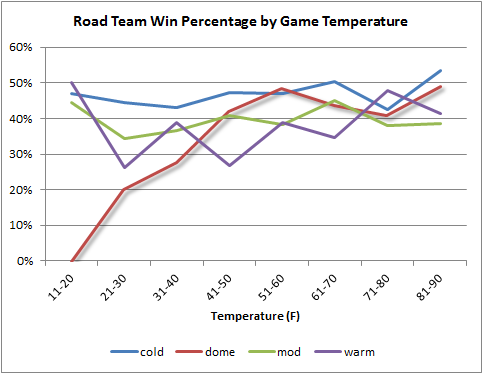
by Kelly Riggs
“Prescription without diagnosis is malpractice.”
Zig Ziglar
Good sales managers care about metrics.
After all, it’s very hard to manage something you don’t know anything about, and metrics provide the critical information that managers need to know about sales performance.
However, metrics typically only tell us what has already happened, not what is going to happen. Yes, there is some predictive value in analyzing what has happened in the past, but metrics are still lagging indicators. Being in sales can be classed as high risk for some businesses depending on what is being sold and if there is a chance for charge-backs, that is why managers need to be aware of how they are conducting their business and what that will mean for a company overall. In this industry, using a resource such as https://merchantalternatives.com/merchant-services/merchant-accounts/credit-card-processing-high-risk/, as well as others like it, will give them some cushioning as they deal with their sales and manage their finances when their metrics are looked at.
How much did you sell?
What percentage of quote did you achieve?
What was your margin percentage?
How much new business did you create?
Just knowing what happened is completely insufficient in managing and coaching a sales team. It’s important to know why the results happened.
Here is a common example: A salesperson sold $110,000 in a month, and her quota was $100,000. How did she do?
At first glance, that may sound like a silly question. She exceeded quota, so what else do you really need to know? Plenty, as it turns out. Was she lucky or did she do her job well? Do you know why she exceeded quota? Are you convinced she could replicate her success? Is there anything she is doing that the rest of your team should learn?
And here is the other side of the coin: A salesperson sold $90,000, but came up short of quota by 10 percent. Do you know why he fell short? Do you know what went wrong? Do you know what he needs to do differently? This is why people love careers at AMP Payment Systems so much because they look at all this information which allows your sales career to keep getting better.
That metric – total sales revenue – tells you absolutely nothing about the “why” behind the metric. It’s great for keeping score, but not so helpful in analyzing the underlying causes of performance.
 Sports scores, of course, present the same problem. The score doesn’t tell you anything other than who won the game. If a football team won a game, 13-10, did they play well? Or did they turn the ball over four times and escape against a team they should’ve crushed? What areas of play need to improve?
Sports scores, of course, present the same problem. The score doesn’t tell you anything other than who won the game. If a football team won a game, 13-10, did they play well? Or did they turn the ball over four times and escape against a team they should’ve crushed? What areas of play need to improve?
Based on score alone, you really won’t have much of an idea.
The thing is, salespeople get paid to produce results, but just looking at results doesn’t help the sales manager understand work processes and what the salesperson needs to do differently.
Unfortunately, the same general challenges exist when sales managers measure activities rather than results:
Results metrics include revenue, margin, growth, win/conversion rates.
Activities metrics include meetings, presentations, proposals, follow-up calls – the things that ultimately contribute to results.
Let’s assume a salesperson made 35 sales calls in a week. Is that good or bad?
Or, a salesperson made 9 solution presentations in a week. Success or failure?
Hard to tell, right?
So, sales managers are faced with a slight problem – which metrics should they monitor? And why? And, most importantly, how do you coach salespeople based on the information those metrics provide?
“There are three kinds of lies: lies, damned lies, and statistics.”
Attributed to Benjamin Disraeli by Mark Twain
When managers lack insight into why results look like they do, sales management often sounds a bit ridiculous:
 These ideas – and other wild shots in the dark – are what passes for coaching when the manager really doesn’t know why sales performance is lagging. In many cases, a sales manager will simply decide that a salesperson just isn’t a “born salesperson” and start looking for a replacement.
These ideas – and other wild shots in the dark – are what passes for coaching when the manager really doesn’t know why sales performance is lagging. In many cases, a sales manager will simply decide that a salesperson just isn’t a “born salesperson” and start looking for a replacement.
The challenge is correlating random data to sales performance, and I’ve seen sales managers with dozens of reports at their fingertips fail to understand the specific challenges for any particular salesperson, although they think they can.
“Jim, looking at your numbers this past quarter, you came up short on your revenue objective again. You finished at 88.6% of plan, and that’s two quarters in a row that you’ve fallen short of your number. That trend is a problem.”
“That’s true, Janet, but I don’t think these revenue objectives are based in reality.”
“Well, Jim, according to our metrics, you just aren’t making enough presentations. You’re 16th out of 20 salespeople at 6.56 presentations per week through the end of Q2.”
“Janet, that’s crazy. I make more presentations than Jeff and he finished 3rd in the company in percentage of goal this quarter. If I had his territory, I’d be killing it, too.”
“It’s not about his territory, Jim. Jeff’s win rate is much better than yours. He closes 61% of his presentations and you’re at 52.5%. Are you asking for the order consistently?”
“Of course I’m asking for the order. Are you kidding me? People aren’t buying out there because the economy is struggling, and companies are pulling back on their budgets.”
“Jim, every salesperson in the company has to deal with the economy, and many of them are hitting their objectives. What’s important, I think, is that if you look at the average number of days for your “In Negotiation” accounts – this report says 88 days – I’m not sure you’re getting clients through the sales cycle fast enough. The company average is just under 78 days.”
And on and on it goes. Using metrics to make a case that may or may not exist at all.
The problem is that the sales manager isn’t considering a number of factors that are likely impacting Jim’s performance. But which one of her sales metrics provide any insight into these specific issues?
What you should know that trying to interpret metrics without a sales process as a guide is like trying to read a blurred page without glasses. The sales process is what provides the sales manager with a reference point for applying relevant sales metrics.
What is important is to understand key metrics for each “gate” or “step” in the sales process that will yield an understanding of a salesperson’s effectiveness in that particular phase of the process. Rather than relying strictly on performance metrics alone (revenue, margin, growth, etc.), the sales manager can use activities metrics based on the sales process to provide some context to the salesperson’s performance. As a sales manager, it could be your duty to calculate the sales margins along with profits and provide the data to an accountant or bookkeeping services to log the metrics in financial books. However, when your calculations go wrong because you might have not really understood the issues of the salesperson, which could reflect on the sales, the business financial records can get affected.
The real problem, however, is that sales managers are approaching this problem completely wrong. Instead of focusing on metrics, they should be focusing on sales plans.
 Think about a football team. After any particular game, there are enough statistics (metrics) produced to make your head explode – totals, percentages, ratios, rankings, and more – with comparisons against a huge baseline of references. There are, in fact, three critical statistics that a football team can track that are fairly predictive of how the team will finish: 3rd down conversion percentage, turnover margin, and red zone efficiency.
Think about a football team. After any particular game, there are enough statistics (metrics) produced to make your head explode – totals, percentages, ratios, rankings, and more – with comparisons against a huge baseline of references. There are, in fact, three critical statistics that a football team can track that are fairly predictive of how the team will finish: 3rd down conversion percentage, turnover margin, and red zone efficiency.
Still, if your numbers are poor in those categories do they tell you why they are poor?
Nope.
Because numbers without context provide little direction for making changes. It is the team’s game plan, and an analysis of the components of the plan’s execution, that provides that context (as an example, see my short analysis of Super Bowl 50 at the end of this article).
A sales plan, on the other hand, includes the identification of very specific target accounts, specific strategic and tactical objectives for existing KEY accounts, specific objectives for different product lines, and an intentional approach to relationship development, and much more. When salespeople are required to identify specific accounts and to create specific plans to develop those accounts, sales coaching is much more specific and deliberate. For an instance, if you sell cosmetic products of good quality, which customers also demand but still, the sales number is decreasing. What could be the reason that you need to understand? Maybe the problem is with the packaging. If it is the case, you may have to develop innovative ideas and unique designs for the presentation of your product. You can use sustainable bottles made from paper and PCR procured from Impacked Packaging or a similar company. This would convey the message of climate and environmental protection to the customer through your packaging. There are chances that a person may want to purchase that item by seeing the unique designs of your bottles and also as a contribution towards the environment. That’s why a sales plan is usually aimed at dealing with the major obstacles that are affecting revenue growth.
Let’s take another example, a salesperson is required to develop a sales plan that includes selling a new product line into a specific market vertical. That plan projects her to develop $80,000 in revenue in that new product line (I’ll leave margin expectations out of this discussion). She then identifies 8 existing KEY accounts that she can expand with the new products, and she blueprints an additional 12 target accounts with high potential to buy the new product line. Her plan projects potential new business of a minimum of $160,000 in sales, and given her current win rate of 40%, she believes she will attain the $80,000 in revenue projected. And this is just one part of her detailed sales plan that includes specific action plans and call progressions for each of those accounts.
Now, the sales manager can review the phases of the sales process against the specifics of that plan to gain an understanding of why the metrics are the way they are. The metrics begin to make sense inside of that context.
Further, in regular 1-on-1 meetings with this salesperson, the sales manager can focus on the specific activities in each of these accounts and identify sales issues as they occur – using key sales metrics as a validator and guide to performance in a very specific context. And, yes, a big part of the sales management problem is trying to meet with a salesperson once a quarter to review a set of metrics that don’t tell us a whole lot about why something happened.
Unfortunately, sales planning isn’t sexy, and it requires a significant amount of work – something that many sales managers and salespeople aren’t willing to do. In addition, most of what passes for “planning” is usually nothing of the sort. Sales managers are sorely lacking in sales planning skills!!
When created, however, a detailed sales plan prescribes a clear path to reach the salesperson’s objectives – detailing which clients, which prospects, which products and/or services, which market sectors, and which geographies will produce the desired outcomes.
Sales management then becomes a process of reviewing a very specific sales plan. And, at this point, there is no place for the salesperson to hide. Either he executed his plan or he didn’t. If he did execute the plan, he either did well or he didn’t. But the first two hurdles are crystal clear: 1) Did he have an effective, well-developed sales plan? 2) Did he execute the plan?
If the answers to both questions are yes, and his performance is not up to expectations, then further analysis of the phases of the sales process will provide significant clues to the issues that need to be addressed.
To be clear, this is not a random call to abandon sales metrics, or to declare metrics as useless! In fact, there are some critical metrics that any sales manager should be aware of that can be extremely predictive. Townsend Wardlaw, for example, recently published a great article regarding the value of “top of funnel” first meetings with new prospects and why sales managers should track that metric carefully.
Instead, this is a call for sales managers to demand, and/or help their salespeople create, effective sales plans, and to abandon the mindless sales coaching that results when sales managers don’t have a plan to analyze.
If you would like to learn more about how I teach salespeople to
create and execute effective sales plans to achieve sales objectives,
CLICK HERE to schedule a time to speak with me.
 Super Bowl 50 Analysis
Super Bowl 50 AnalysisCarolina had 21 first downs to Denver’s 11.
Carolina had 315 total yards to only 194 for Denver.
Denver was only 1-of-14 on 3rd downs.
Denver QB Peyton Manning threw an interception and only threw for 141 yards.
Carolina averaged 4.2 yards per play vs. 3.7 for Denver.
Final Score: 24-10.
Statistics (metrics) can be a bit misleading, to say the least. With those numbers, you would expect that Carolina won the game. But, they didn’t. Denver won, and it was, as a USA Today article pointed out, because they executed their game plan flawlessly:
The Carolina Panthers’ receivers had no chance against the Denver Broncos’ cornerbacks. Their tackles had no chance against the Broncos’ pass rushers.
The Broncos were certain of it before kickoff Sunday, leaving little doubt about how they intended to pull off a Super Bowl 50 stunner: Load the box to stop the run, man up on the back end and dare Cam Newton and the Panthers to beat them by throwing the ball.
“That’s it!” Broncos safety T.J. Ward told USA TODAY Sports after the 24-10 triumph was complete. “Really. Don’t let ‘em run, and their passing game is not very good.
“We knew: stop the run. If we stop the run, we take their heart. We took their heart.”
Now consider these Super Bowl 50 metrics:
Carolina was 3-for-15 on third downs, rushed for only 118 yards and committed 4 turnovers. Most importantly, the Broncos contained Cam Newton, limiting him to only 45 yards rushing and 18-of-41 passing with an interception.
In the context of the game plan, Denver did exactly what they set out to do, and they won the game.
No matter what the metrics say.
Kelly Riggs is a business performance coach and founder of the Business LockerRoom. A former national Salesperson of the Year and serial entrepreneur, Kelly is a recognized thought leader in the areas of sales, management leadership, and strategic planning. He serves clients ranging from small, privately held companies to Fortune 500 firms. Kelly has written two books: “1-on-1 Management™: What Every Great Manager Knows That You Don’t” and “Quit Whining and Start SELLING! A Step-by-Step Guide to a Hall of Fame Career in Sales.”